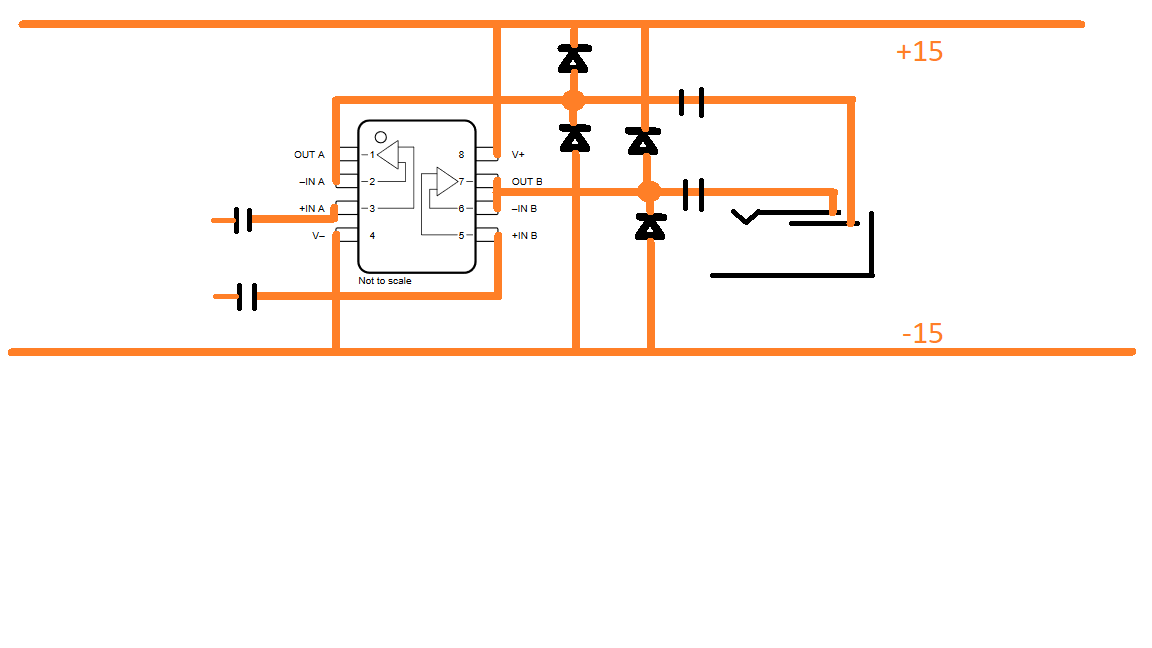Other Parts Discussed in Thread: OPA1678,
I am looking to get a line differential output from this guy to go into an audio mixer. I would just like to confirm that I can throw a bipolar cap on each LOUT+, LOUT-, ROUT+, ROUT-, put some protection diodes in there, route to 2 balanced 1/4 inch jacks and be done with it. All the application notes have differential to single ended buffers and I would like to keep it differential. Thanks in advance for your patience, I am not an EE, I'm just a guy trying to build an audio transceiver.


